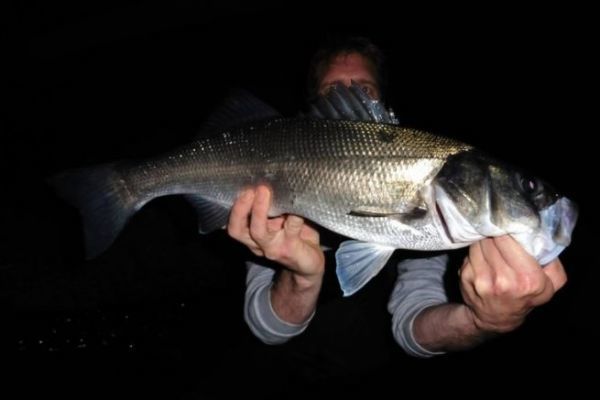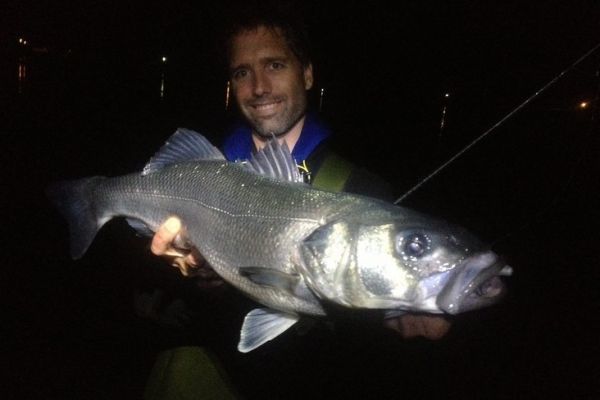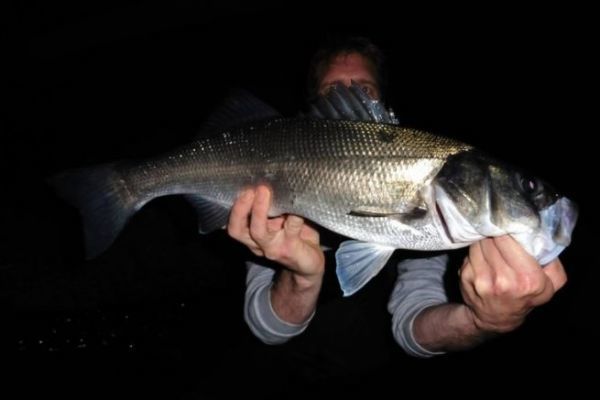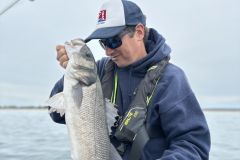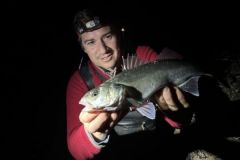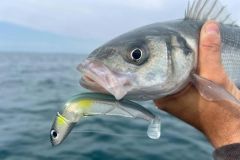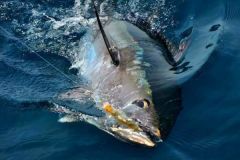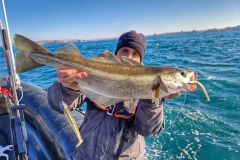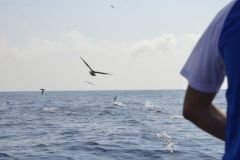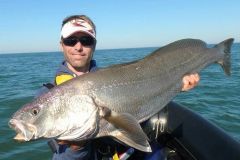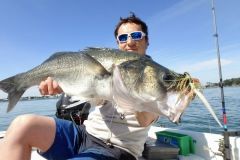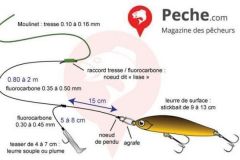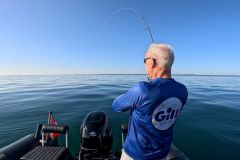Where to fish at night?
Daytime scouting will help you select the best areas for night bass fishing. Bear in mind that this predator comes close to shore to feed on all the fauna that emerges from its hiding place as night falls. They are particularly fond of crabs, shrimps and other crustaceans, but also small fish such as pout and small pollack.
Oyster beds are excellent places for night bass fishing. Food is plentiful and fish prowl in very little water.
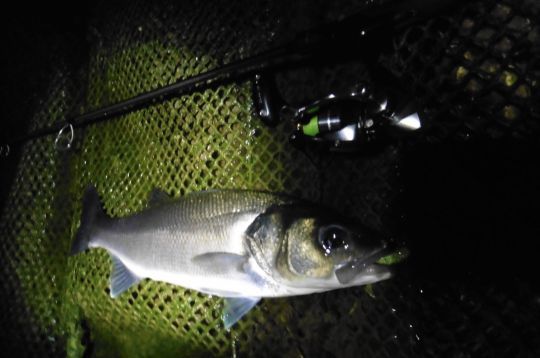
Seaweed banks are also ideal spots. Here, sea bass will be on the lookout for crabs or fish hidden in the seaweed.
Finally, beaches are not to be neglected. However, these areas are larger and require faster fishing to cover a large area.
Equipment for night bass fishing
During your night fishing sessions, you'll lose many of your bearings and the only link with your lure will be the feel of it in your rod.
Feel will be important, so a resonant rod is clearly necessary. When fishing from shore, the rod needs to be long enough to reach decent casting distances, but also have enough reserve power to bridle the prettiest fish trying to get back over an obstacle. Personally, I'd go for a 2.20 m model with 10/30 grams of power.
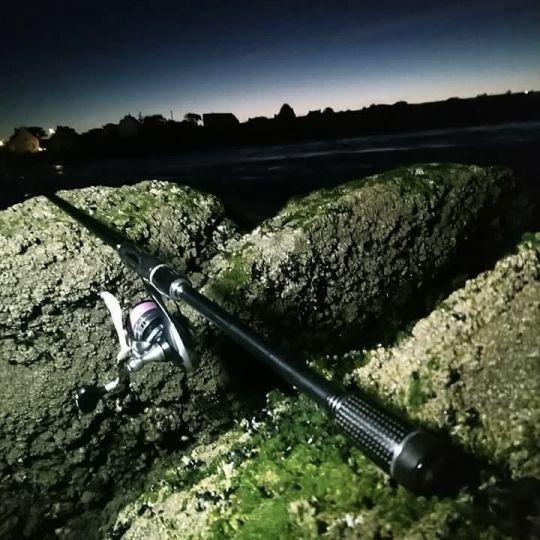
My favorite model is the Rodhouse Statement 766. Its resonance and power reserve make it the perfect weapon for stalking shore bass.
I combine it with a small reel size 3000 and fine braid in either PE0.8 or PE1. Rodhouse's Prodigy model is also the one I select.
A 30 to 33 hundredths long leader for maximum discretion completes the package.
Lure selection for night bass fishing
Night fishing means almost no visibility of the lure.
I opt for lures that emit fairly pronounced vibrations to optimize the chances of being perceived by predators.
I naturally turn to shads, those soft lures that are finished with a paddle. I don't necessarily choose a big model, but something consistent with the size of the prey present in the area. Finally, the Texan rig is a real plus in crowded places.
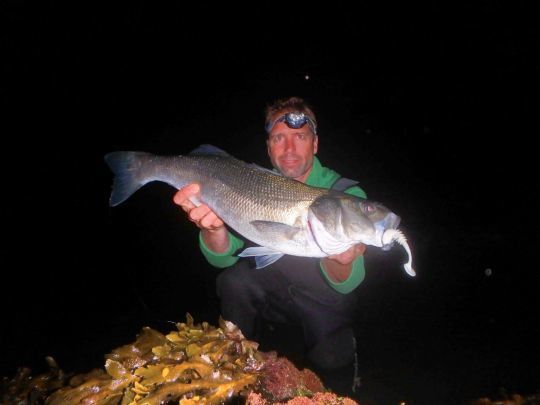
When it comes to colors, there are several schools of thought. Those who opt for bold colors like white or fluorescent, and those who prefer dark, natural colors. To tell the truth, I haven't noticed any real difference. I alternate colors until I find the pattern of the day.
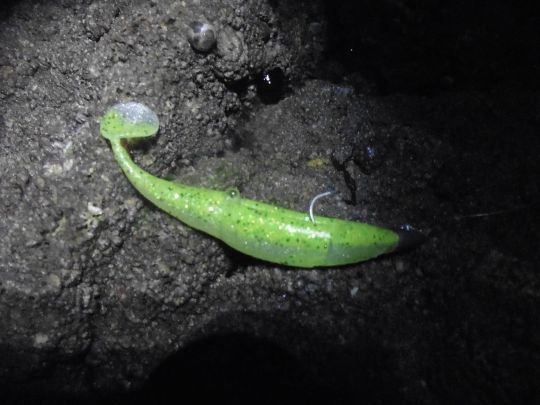
Fishing technique
The main difference in technique between day and night fishing is the speed of animation and retrieve. At night, I slow down animation and don't hesitate to take long pauses, letting the lure settle on the bottom. This is where the Texan rig comes into its own, limiting the risk of snagging.
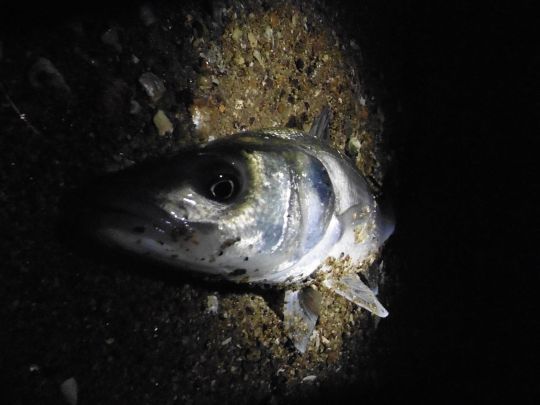
The linear technique is very effective. It consists in continuously retrieving the lure with the reel. Don't forget to vary the retrieve speed and be ready to make a dry strike to secure the catch.
Scratch fishing is also effective. When the lure hits the bottom, it picks up a small amount of substrate and attracts the fish with its noise. At night, fish, less shy than during the day, are sure to come and see what's going on.

 /
/ 